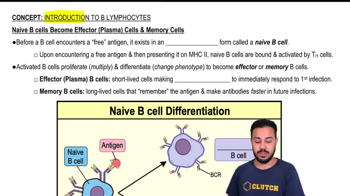A hemoglobin molecule is composed of:
(a) Two protein chains
(b) Three protein chains
(c) Four protein chains and nothing else
(d) Four protein chains and four heme groups
(e) Four heme groups but no protein
 Verified step by step guidance
Verified step by step guidance Verified video answer for a similar problem:
Verified video answer for a similar problem:



 6:11m
6:11mMaster Functions of Blood with a bite sized video explanation from Bruce Bryan
Start learning